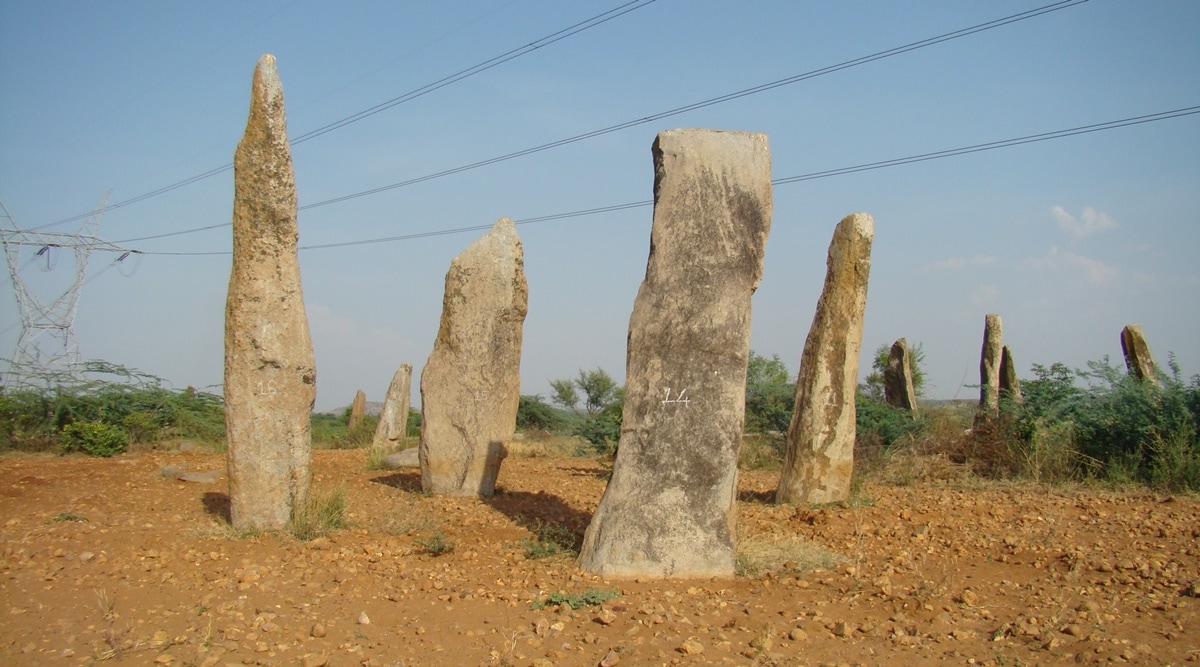Mudumal Menhirs
The Mudumal Megalithic Menhirs have been added to India’s tentative list of Unesco World Heritage Sites. Telangana currently has only one Unesco World Heritage Site, the Ramappa Temple, added in 2021. If approved, the Mudumal menhirs could become the state’s second World Heritage Site.
What Are Menhirs?
Menhirs are large upright stones, typically tapered at the top. They are man-made, sculpted, and placed by humans. The term ‘menhir’ originates from the Brittonic words for stone and long. The largest menhir, the Grand Menhir Brisé in France, once stood at 20.6 metres tall.
Historical Context
Menhirs date back to the late Neolithic and early Bronze Age, approximately 4,800 to 3,800 years ago. The oldest European menhirs are around 7,000 years old. The Mudumal menhirs are as they represent one of the earliest forms of monumental architecture in India.
Purpose and Significance
The exact purpose of menhirs remains debated. They likely served ceremonial functions, acted as grave markers, or had astronomical significance. The Mudumal site is suggested to be an ancient astronomical observatory, with some menhirs aligned with solar events like solstices.
Local Legends and Cultural Importance
The Mudumal menhirs are intertwined with local legends. One particular menhir is venerated as Goddess Yellamma. This marks the cultural significance of the site and its role in local traditions and beliefs.
UNESCO Recognition Criteria
Menhirs deserve UNESCO recognition for two primary reasons. Firstly, they reflect the technological and astronomical knowledge of ancient cultures. Secondly, they provide a glimpse into the societal values and beliefs of the people who constructed them. Their construction required effort, indicating their importance to those communities.
Impact on Archaeological Research
The recognition of the Mudumal menhirs enhances archaeological research in India. It encourages further exploration of megalithic sites and their cultural contexts. Such studies can reveal more about prehistoric societies and their interactions with their environment.
Month: Current Affairs - March, 2025
Category: Art & Culture Current Affairs








